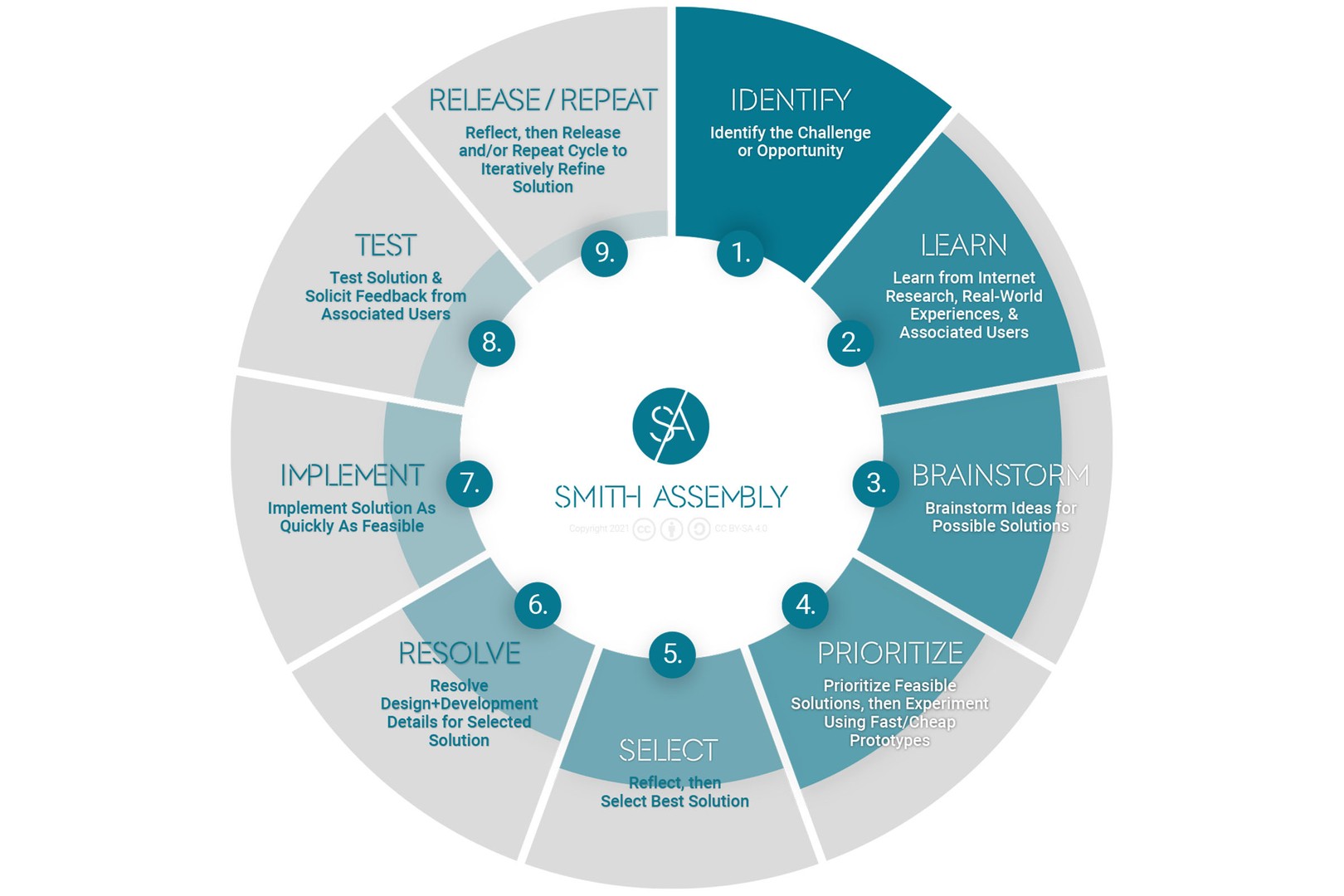Have we mentioned yet how much we love iterative design and development? Thanks to formative experiences early in our careers — for Liz at Human Code and frog and for Ta at Hub iLab and MIT D-Lab — the design cycle informs nearly everything we do.
It took us over a hundred iterations and many months before we landed on the concept for Smith Assembly. When the pandemic hit and we needed to pivot our business, we went through dozens of ideas and customer discovery conversations before we settled on our current online workshop format. The content for each of our workshop’s sections also went through their own extensive design processes and rounds of user experience testing.
We hope you value design thinking as much as we do. We’re excited to share with you this infographic of our design process. Tell us about yours on social media by tagging #SmithAssembly. How do you design and develop inclusive products and programs?
Infographic of Our Design Process
Design thinking makes it possible to solve complex problems with simple steps. Use this design process on your next software, hardware, engineering, or household project.
Each cycle you complete brings you closer to an optimal solution. By increasing the variety of research you do and people you talk with, you can make your solutions even more accessible and inclusive.
- Identify the Challenge or Opportunity
- Learn from Internet Research, Real-World Experiences, & Associated Users
- Brainstorm Ideas for Possible Solutions
- Prioritize Feasible Solutions, then Experiment Using Fast/Cheap Prototypes
- Reflect, then Select the Best Solution
- Resolve Design+Development Details for Selected Solution
- Implement Solution As Quickly As Feasible
- Test Solution & Solicit Feedback from Associated Users
- Reflect, then Release and/or Repeat Cycle to Iteratively Refine Solution
